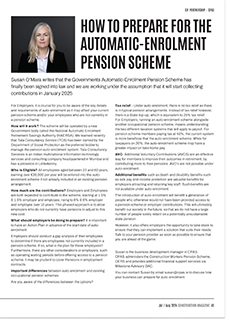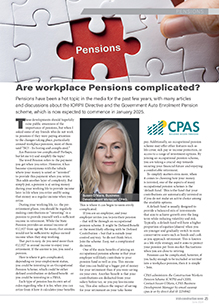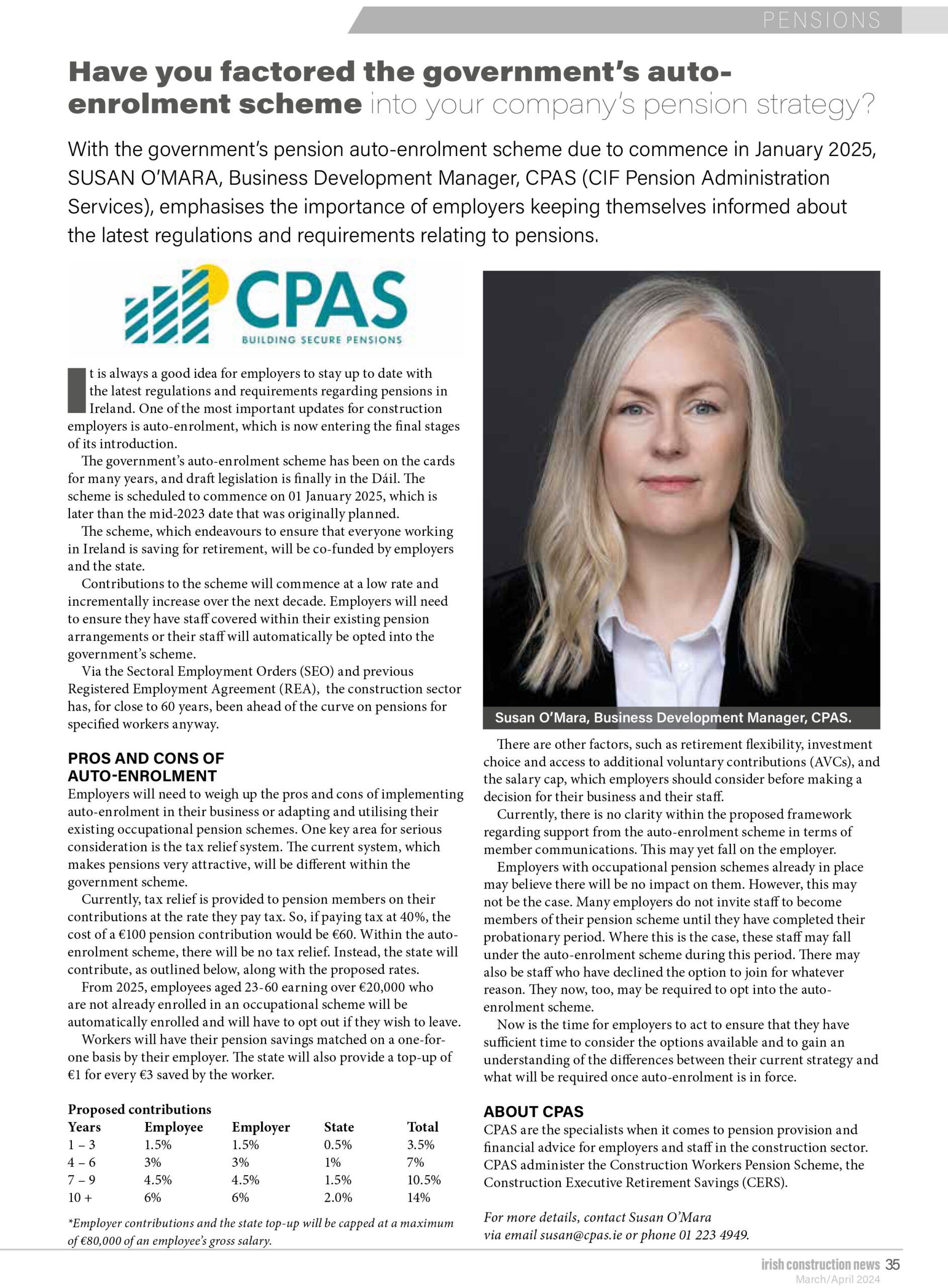This month in Construction Magazine, Susan O’Mara writes that the Governments Automatic-Enrolment Pension Scheme has finally been signed into law and we are working under the assumption that it will start collecting contributions in January 2025.

For Employers, it is crucial for you to be aware of the key details and requirements of auto-enrolment as it may affect your current pension scheme and/or your employees who are not currently in a pension scheme.
How will it work? The scheme will be operated by a new Government body called the National Automatic Enrolment Retirement Savings Authority (NAERSA). We learned recently that Tata Consultancy Service (TCS) has been named by the Department of Social Protection as the preferred bidder to manage the pension auto-enrolment system. Tata Consultancy Services is an Indian multinational information technology services and consulting company headquartered in Mumbai and has a presence in Letterkenny.
Who is Eligible? All employees aged between 23 and 60 years, earning over €20,000 per year will be entered into the auto-enrolment scheme if not already included in an existing pension arrangement.
How much are the contributions? Employers and Employees are both expected to contribute to the scheme, starting at 1.5% & 1.5% employer and employee, rising to 6% & 6% employer and employee over 10 years. This phased approach is to allow employers who do not currently have pensions to adjust to this new cost.
What should employers be doing to prepare? It is important to have an Action Plan in advance of the start date of auto-enrolment.
Employers should conduct a gap analysis of their employees to determine if there are employees not currently included in a pension scheme. If so, what is the plan for these employees? Furthermore, there are other considerations or employers, such as operating waiting periods before offering access to a pension scheme. It may be prudent to cover Pensions in employment contracts.
Important differences between auto-enrolment and existing occupational pension schemes
Are you aware of the differences between the options?
Tax relief – Under auto-enrolment, there is no tax relief as there is in typical pension arrangements. Instead of tax relief however, there is a State top-up, which is equivalent to 25% tax relief. For Employers, running an auto-enrolment scheme alongside another occupational pension scheme, means understanding the two different taxation systems that will apply to payroll. For pension scheme members paying tax at 40%, the current system is more beneficial that the auto-enrolment scheme. While for taxpayers on 20%, the auto-enrolment scheme may have a greater impact on take home pay.
AVC- Additional Voluntary Contributions (AVCS) are an effective way for members to improve their outcomes in retirement, by contributing more to their pensions. AVC’s are not possible under auto-enrolment.
Additional benefits such as death and disability benefits such as sick pay and income protection are valuable benefits for employers attracting and retaining key staff. Such benefits are not available under auto-enrolment.
The introduction of auto-enrolment will benefit a generation of people who otherwise would not have been provided access to a pension scheme or employer contributions. This will ultimately benefit our society in the future, so that we do not have a large number of people solely reliant on a potentially unsustainable state pension.
However, it also offers employers the opportunity to take stock to ensure that they can implement a solution that suits their needs. Talk to your pension provider as soon as possible to ensure that you are ahead of the game.
Contact your pension provider to get expert help.
CPAS are the specialists when it comes to pension provision and financial advice for employers and staff in the construction sector.
CPAS administer the Construction Workers Pension Scheme and the Construction Executive Retirement Savings (CERS).
We can ensure you are Auto Enrolment ready!
Contact Susan O’Mara via email susan@cpas.ie or phone 01 2234949.






